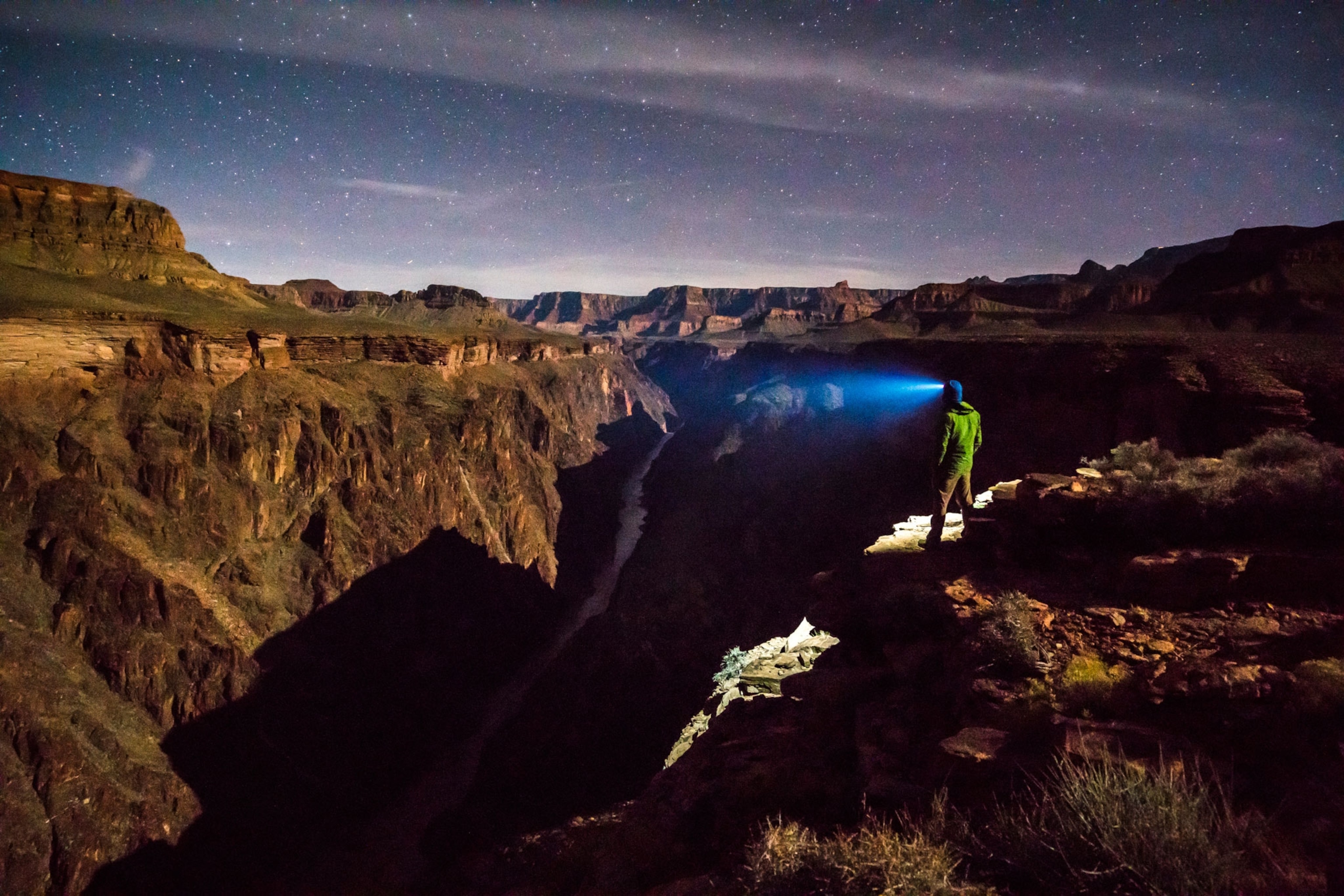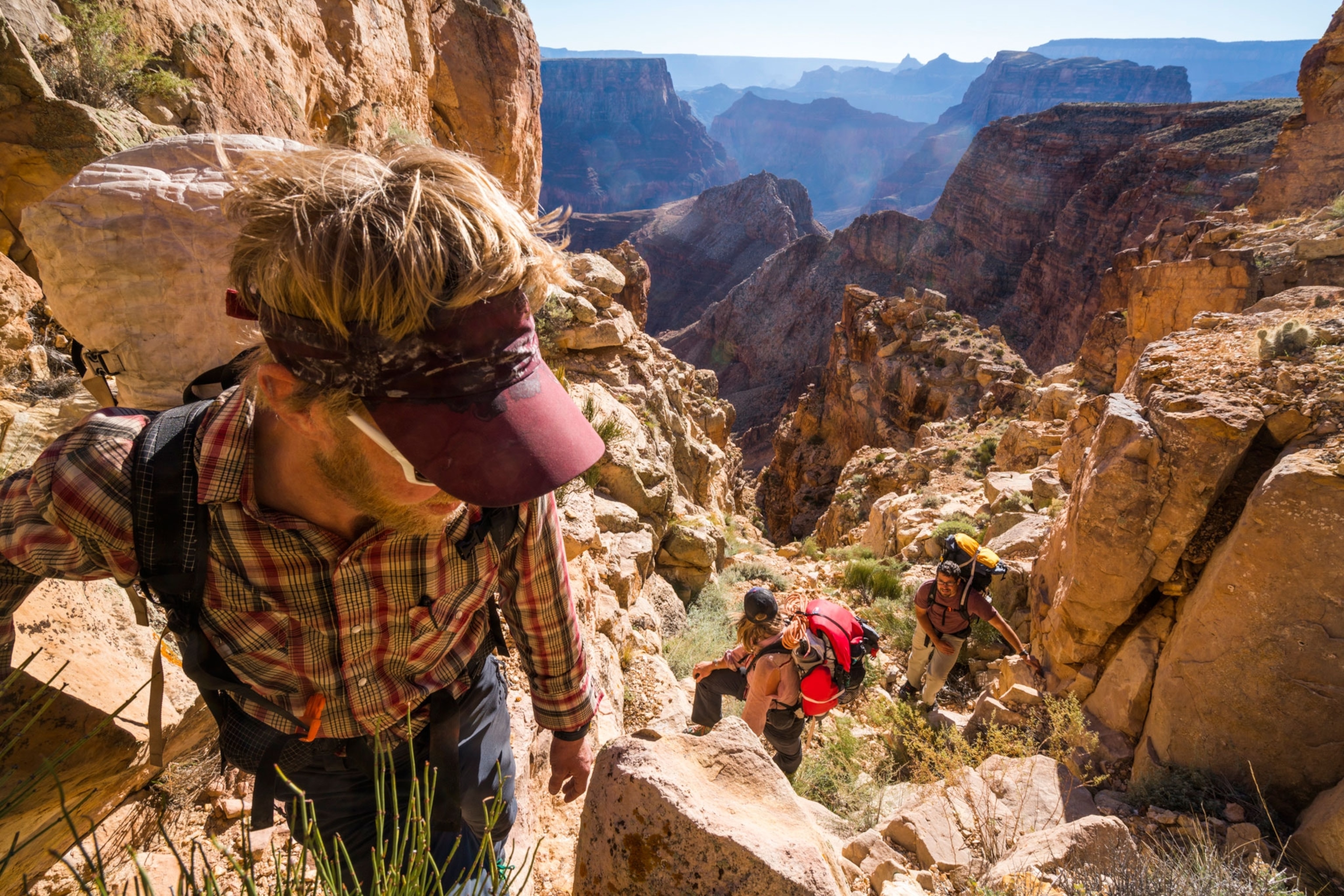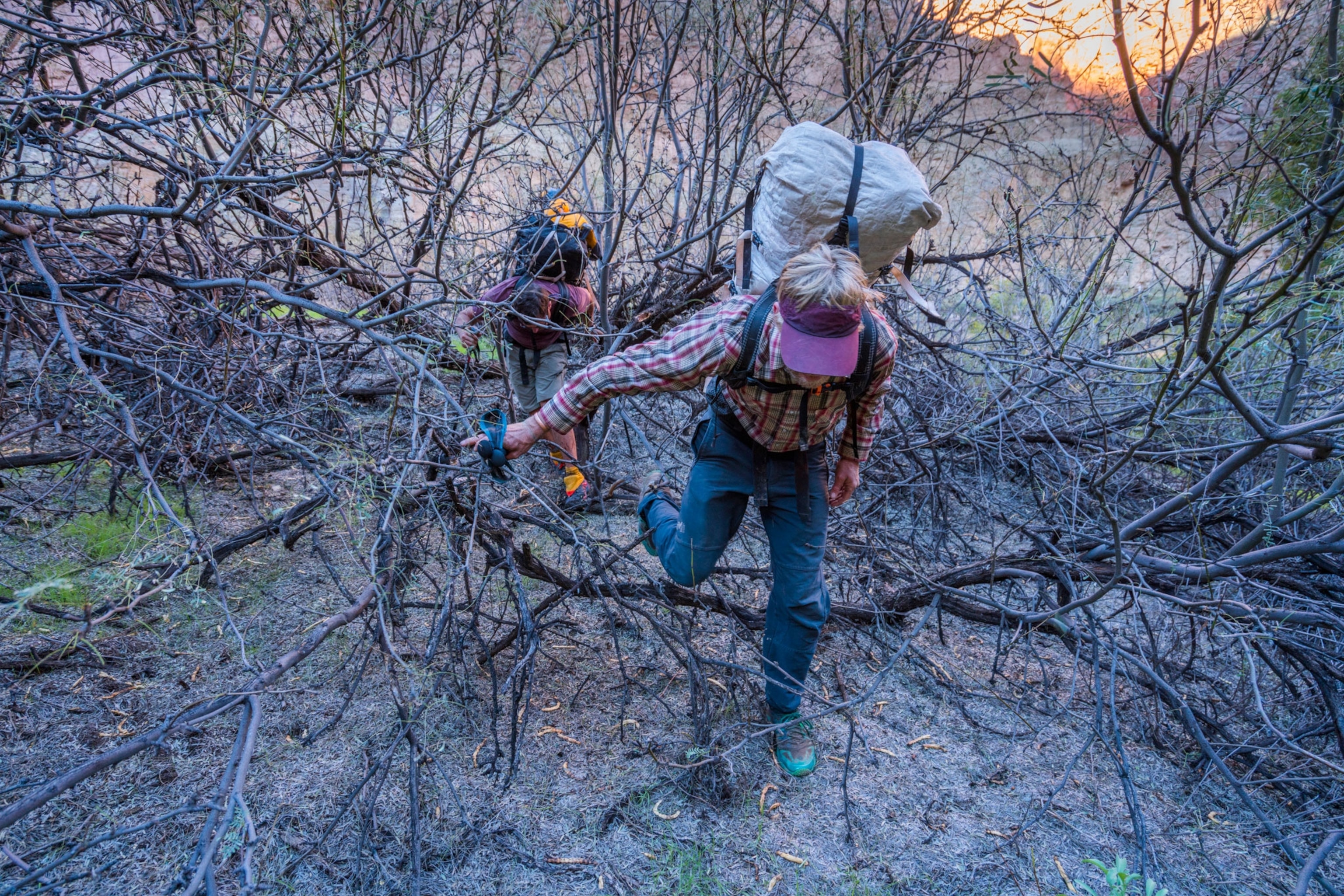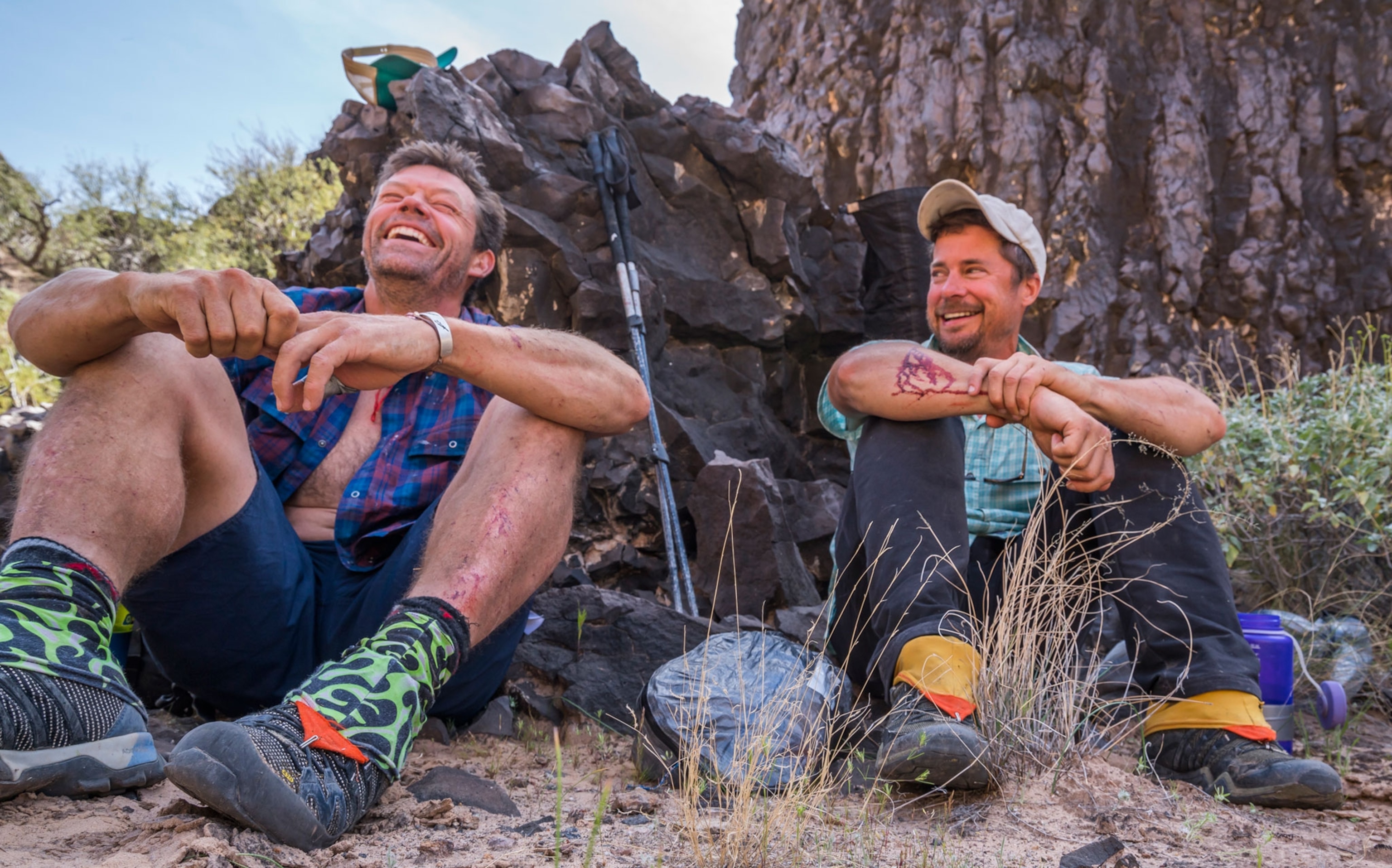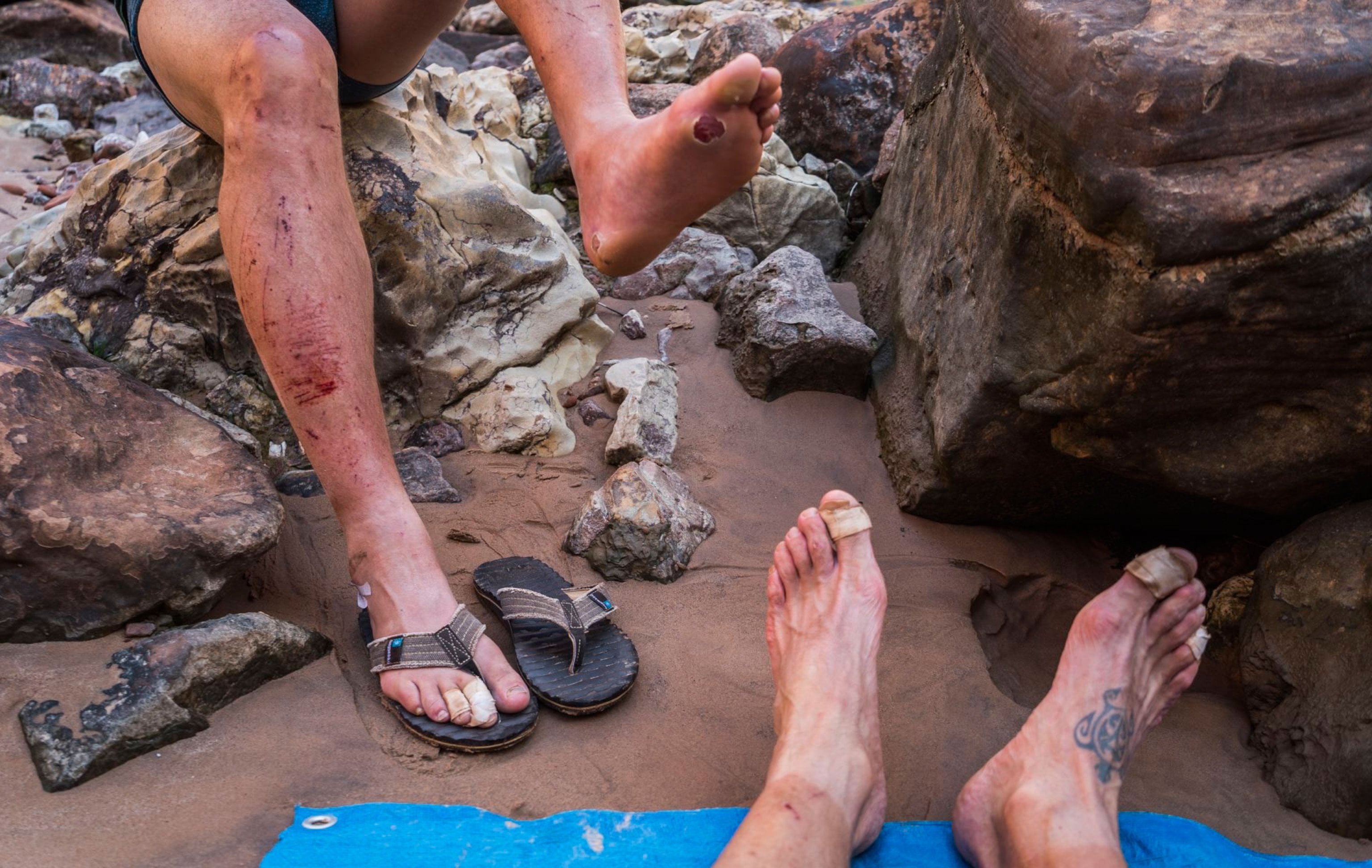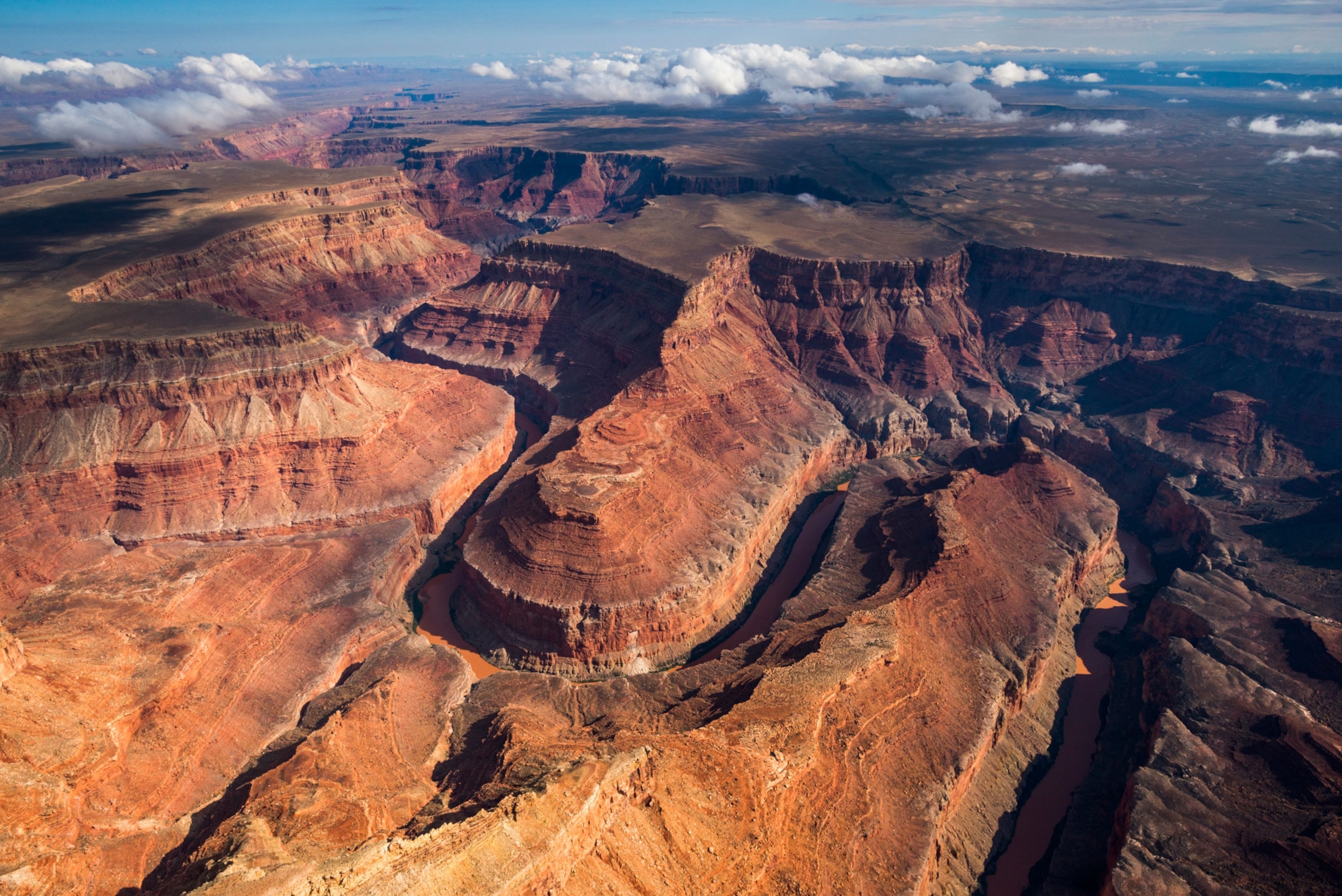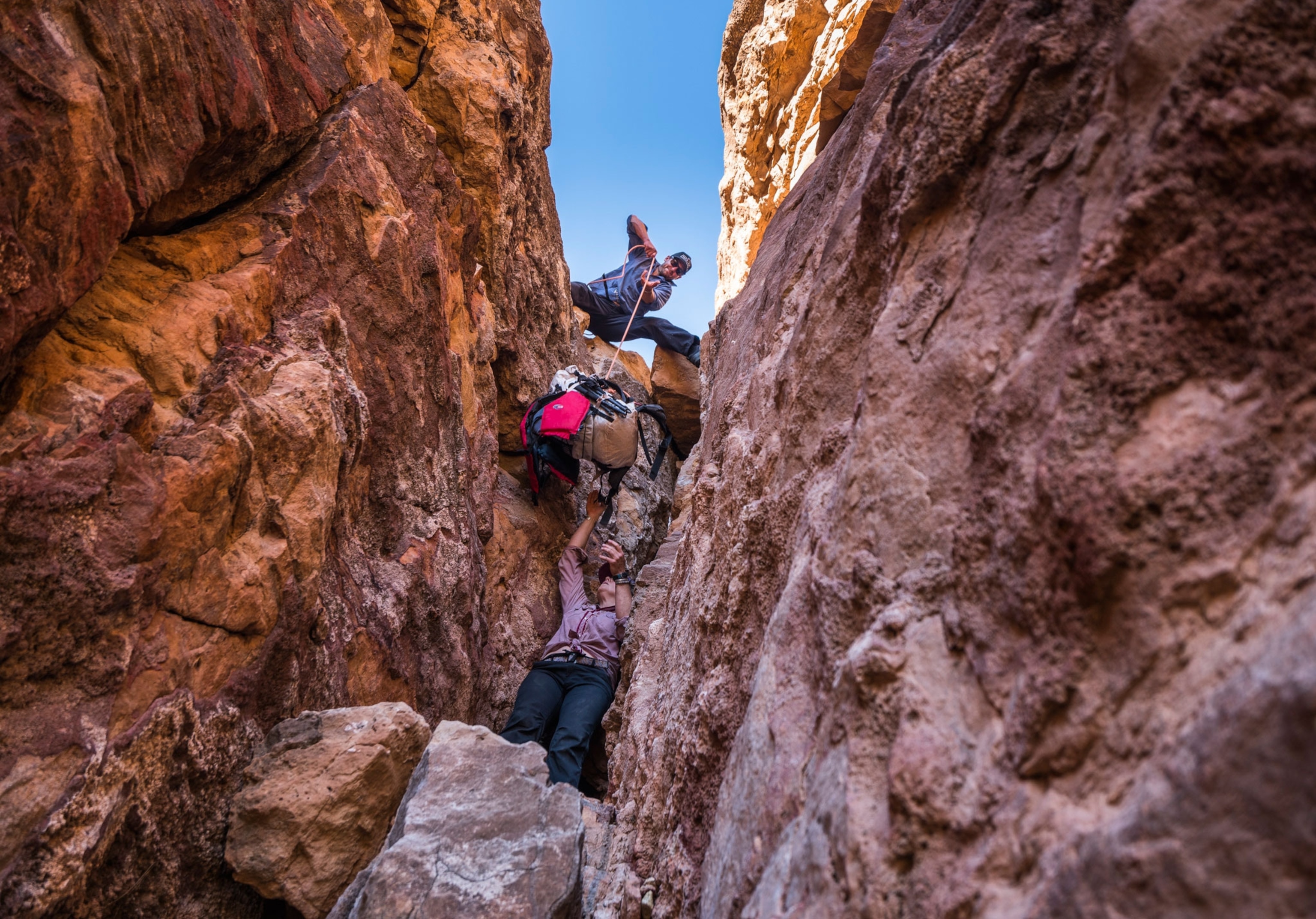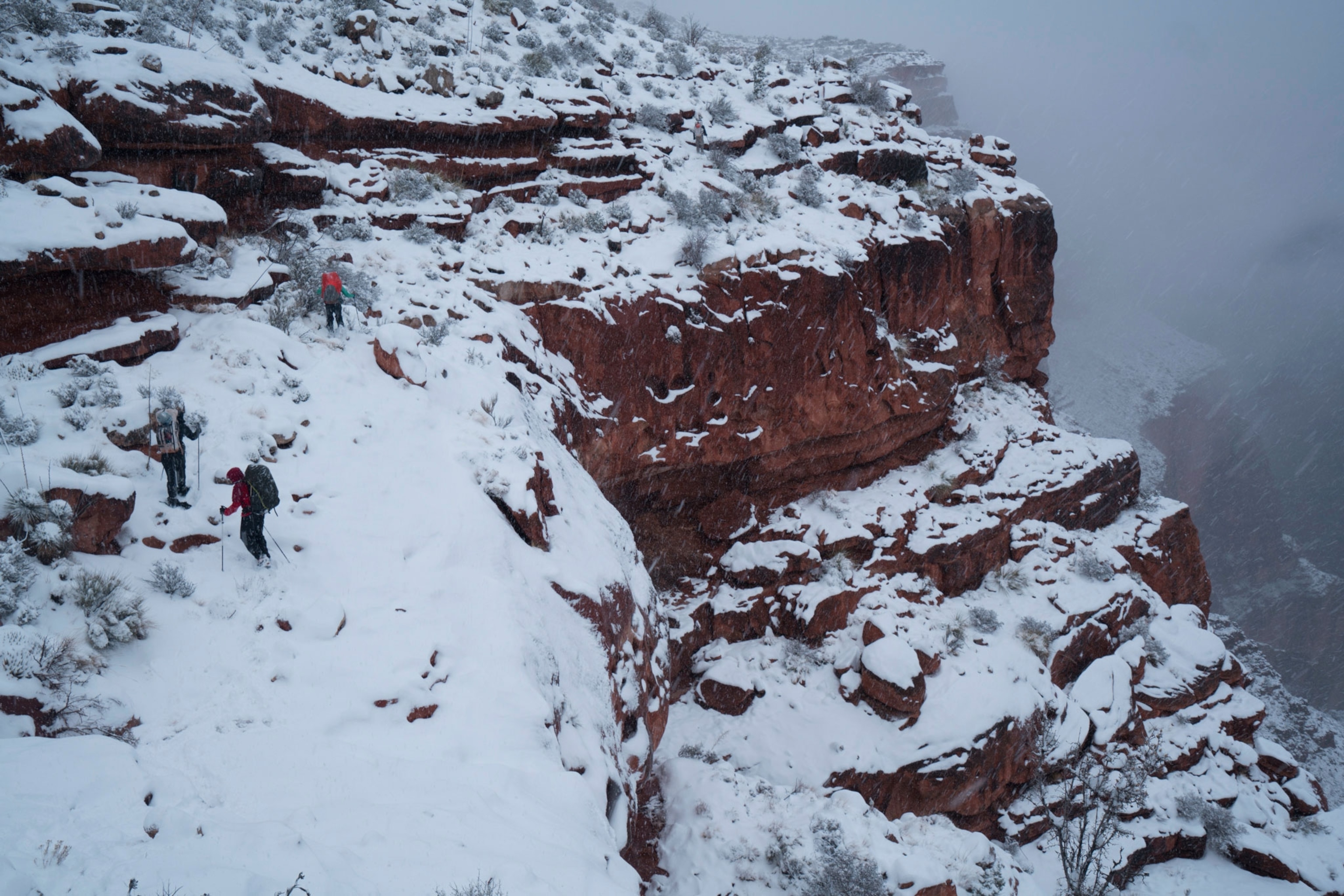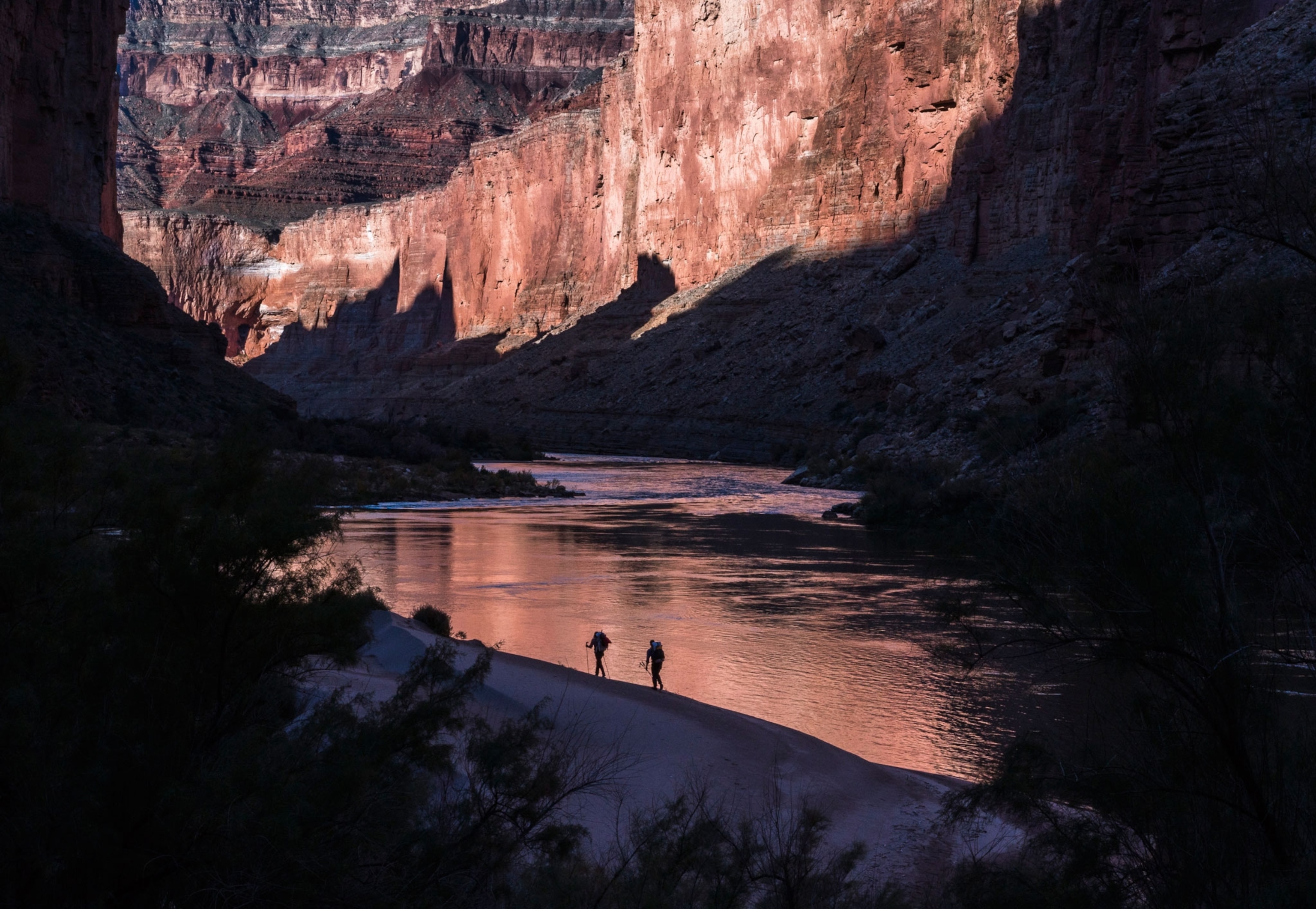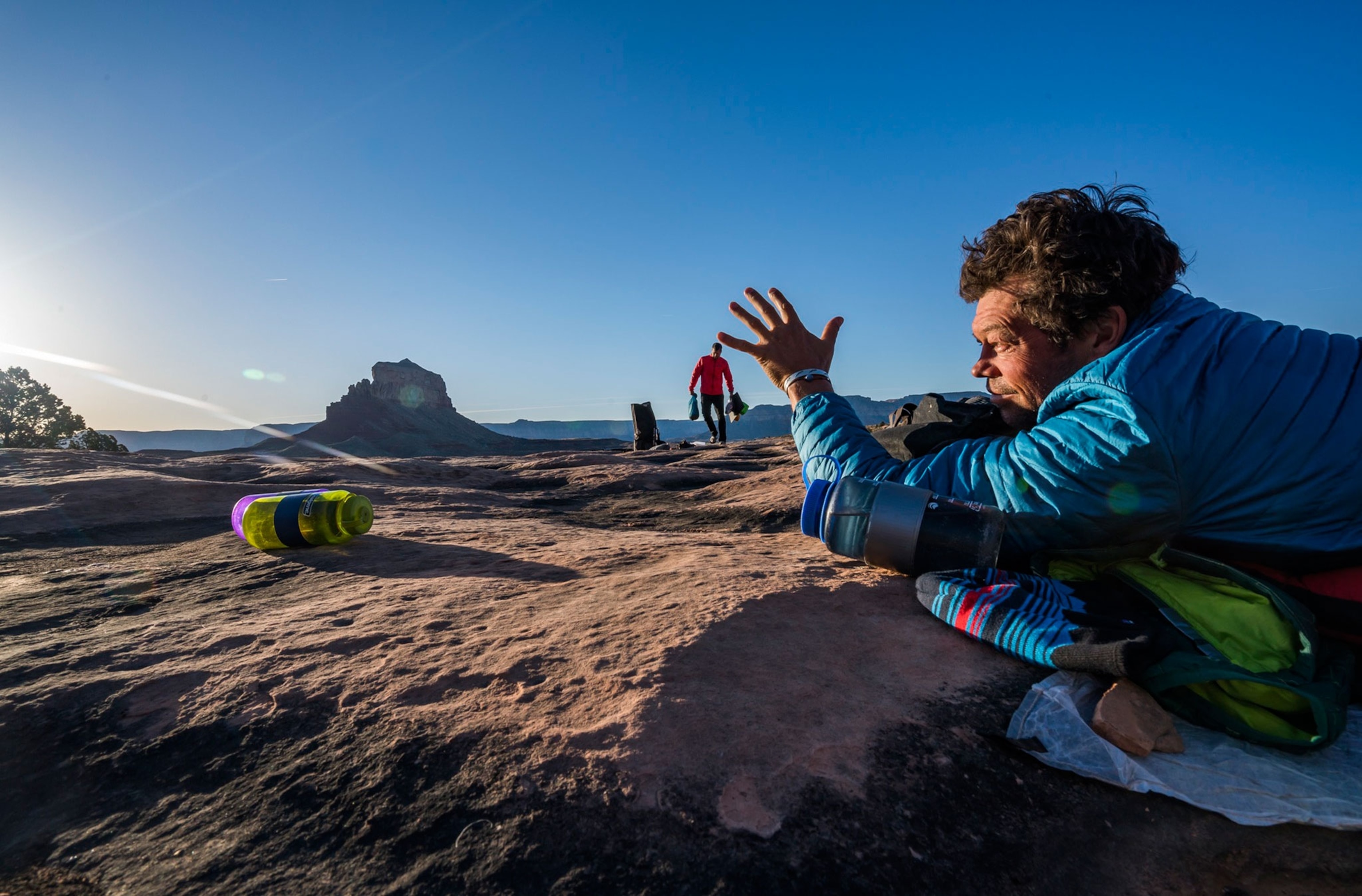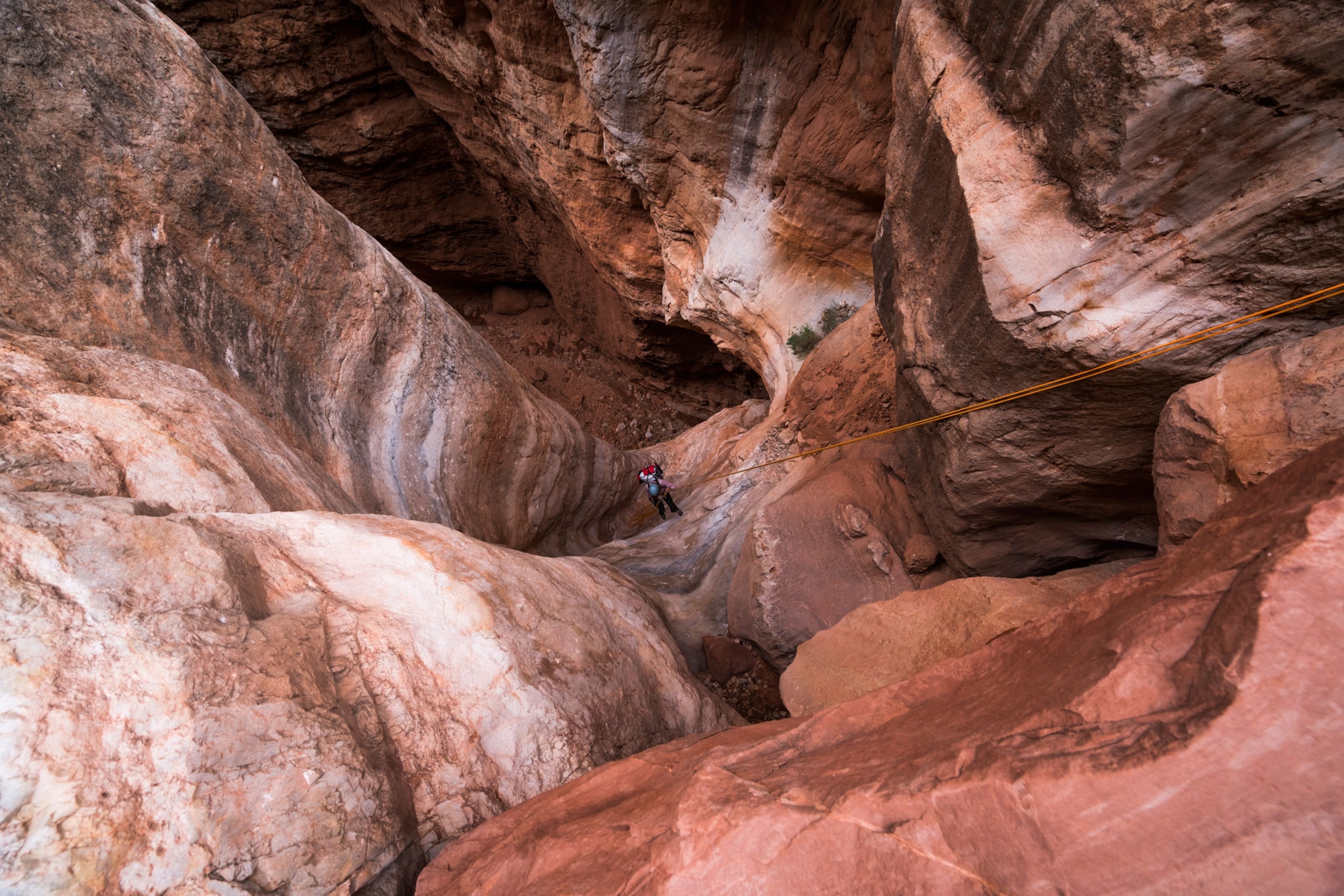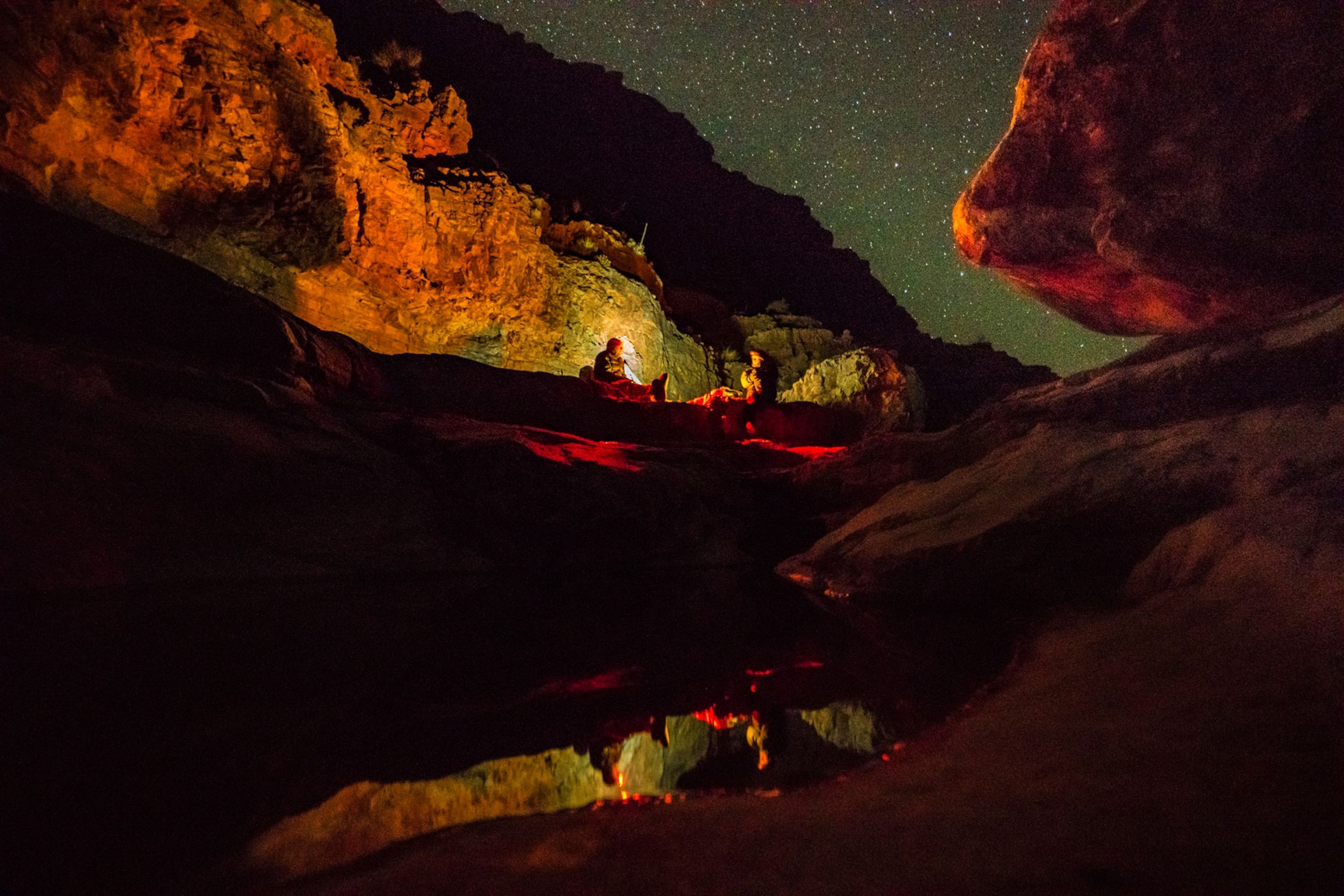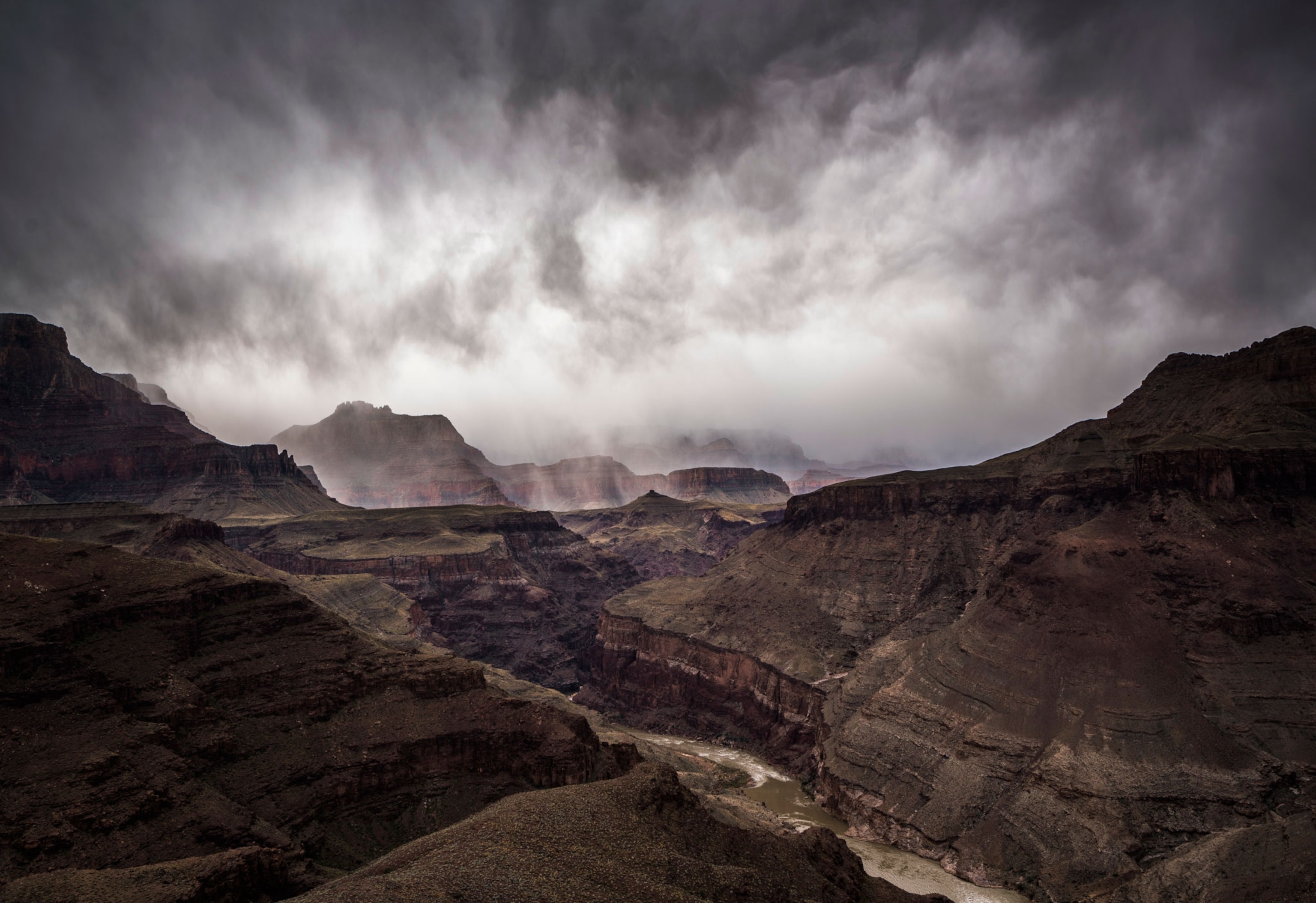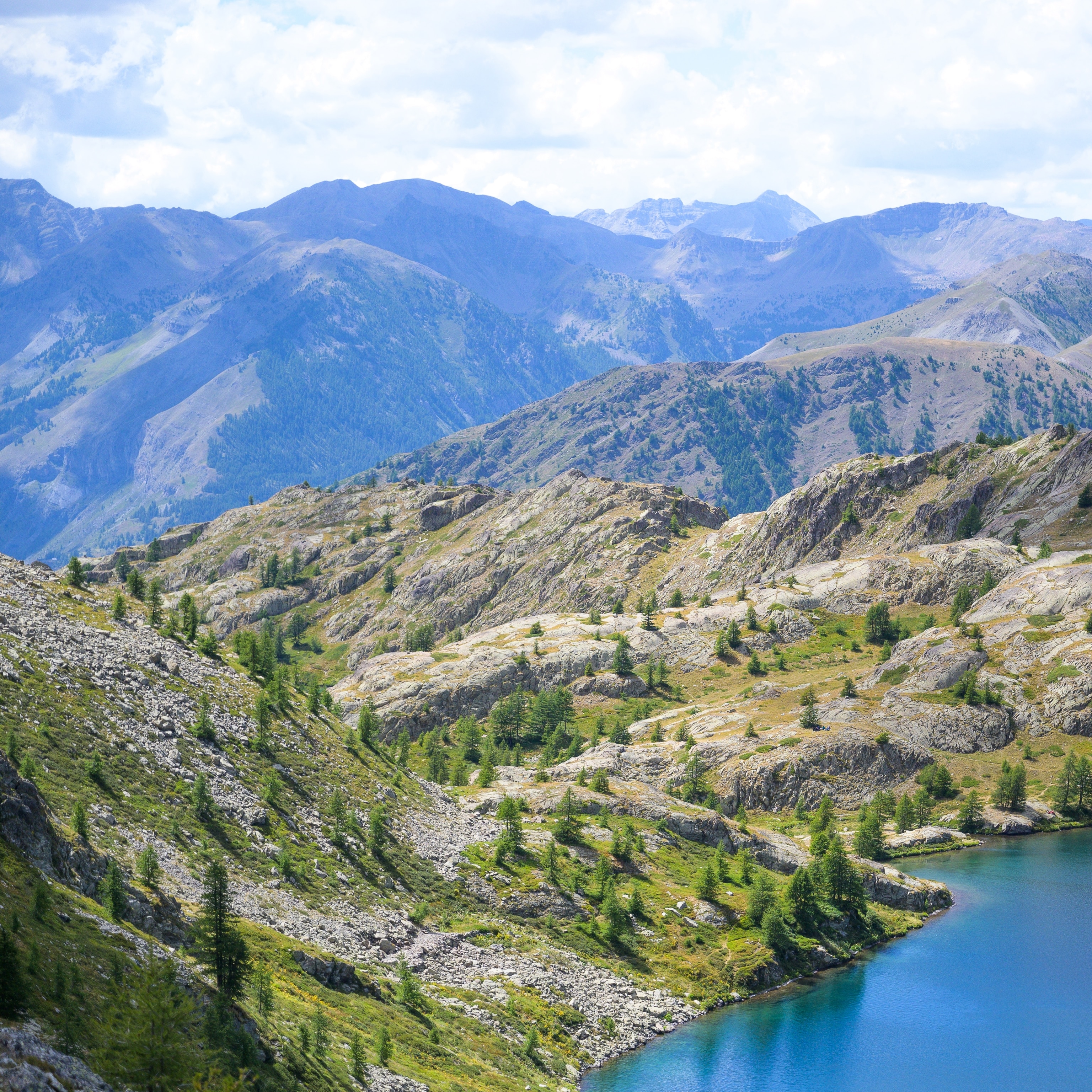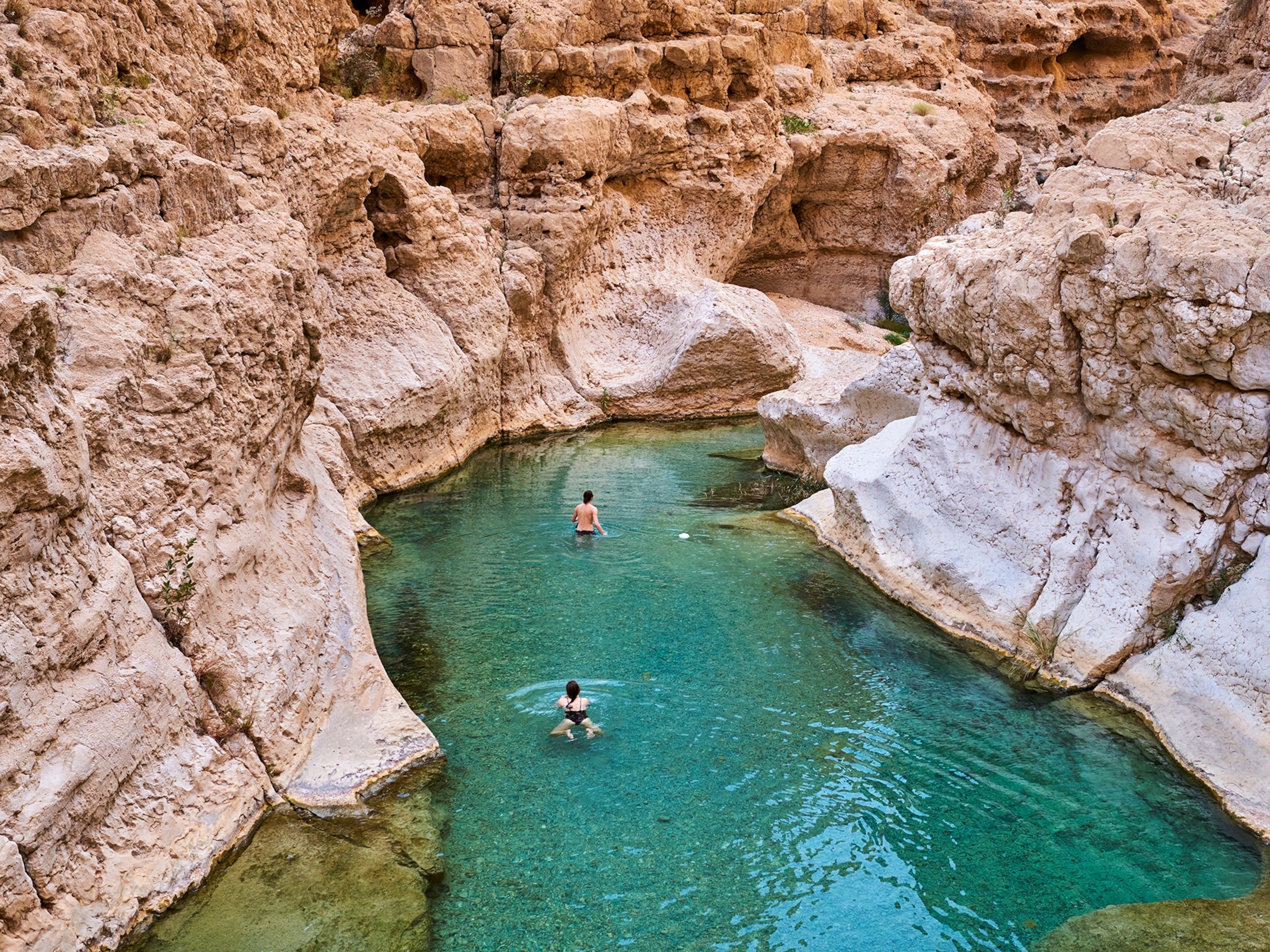Hikers Trace the Length of the Grand Canyon to Save It
Pete McBride and Kevin Fedarko slog through more than 750 miles of dangerous, dry terrain to raise awareness about development projects that could change the Grand Canyon forever.
Be careful what you wish for, especially when you set out to walk America's deepest wilderness. On September 28, 2015, writer Kevin Fedarko and photographer Pete McBride set out to thru-hike the Grand Canyon. They wanted to raise public awareness about the numerous threats the iconic national park is currently facing.
(Grand Canyon National Park Photos)
The pair planned to make the trip of roughly 800 miles (it’s tough to estimate exact distances since each route weaves in and out so many side canyons) in sections, documenting the canyon in its different moods during all four seasons of the year.
They knew the hike was going to be arduous: When they set out, only about 24 people had ever accomplished it, and just eight of those—fewer than the number of humans who have stood on the moon, as Fedarko likes to point out—had done the hike as a nonstop push.
At the start, the fact that so few people had ever pulled off a Grand Canyon thru-hike did not discourage Fedarko, based in Santa Fe, New Mexico, and McBride, of Basalt, Colorado, who would be on assignment for National Geographic on this trip. Both had run the Colorado River through the Grand Canyon numerous times and ventured to the wildest reaches of the planet for various magazines. The two spent a month at Everest Base Camp for Outside in 2006. Fedarko, 51, worked for years as a river guide in the canyon and McBride, 45, accompanied writer Jonathan Waterman, who paddled the entire Colorado River 1,450 miles from sea to source for the book The Colorado River: Flowing Through Conflict.
Hiking the Grand Canyon, they thought, was going to be tough, but they were not particularly worried about the physical aspects of it.
The two wanted the trip to be about far more than ticking off an objective, however. Fedarko and McBride are convinced that the Grand Canyon is the most significant unit in the entire National Park System, which celebrated its 100th year while they hiked. After all, this is where Theodore Roosevelt staked out his battle to rethink the way Americans relate to and preserve their public lands.
“You cannot improve on it. The ages have been at work on it, and man can only mar it,” Roosevelt said before going on to use the Antiquities Act to save the Grand Canyon from development, a precedent followed by conservation-minded presidents from then on.
As Fedarko says: “It’s not the most important park if you use conventional metrics for superlatives. It’s not the first, not the largest, not the most visited, but it’s in a category of its own. It’s the crown jewel of the entire system. It’s the most recognized landscape we have.”
The Most Difficult Trek
It did not take long for Fedarko and McBride to realize that this was, in fact, the most difficult undertaking of their lives. Hiking the vertical ground of the canyon—which takes three leisurely weeks to paddle down its entire 277 river miles—is a harrowing exercise in focus. There is nothing close to a trail.
Every step requires some sort of negotiation, whether it’s trusting loose shale with a 400-foot drop to one side, navigating slick ledges, or bushwhacking through nearly impenetrable undergrowth. Much of the "hiking" is, in actuality, class 4 scrambling with deadly exposure.
“Pretty much every second of it is torture,” says Fedarko. "A combination of factors make it so difficult: the demands of route finding and navigation with no trails, the effort of moving through a vertical world, terrain that is characterized by 50-degree slopes, brush so thick that the only way you can progress is by throwing yourself into it over and over again. And the searing heat makes everything more difficult. It abuses your body over time. We had no idea what we were getting into when we started.”
McBride agrees: “You can never take your mind off your feet. You can never gaze around. You are constantly poked, prodded, and abusing your body on some physical level. You are always laser-focused.” He says that it was the mental effort as much as the physical that made it so much more difficult than other expeditions.
Fedarko and McBride were also beholden to water sources—springs and seeps that are few and far between down below the rim. “If you don’t walk that next 14 miles, climbing over the ledges with 1,500-foot cliff inches from you, you are not getting to water,” says McBride.
Knowing that they would often be too far above the river to reach it and making big humps between water sources, the pair tried to pack light, but McBride was hauling a more than 50-pound pack stuffed with camera equipment. Seventy-two hours into that first leg, the photographer began to come down with symptoms of hyponatremia, or low sodium levels, his body racked in pain from a lack of electrolytes. He had a blister that he says “looked like someone put a shotgun to my foot.” Fedarko says he was “leaving bloody footprints on the rock at our camp at night.”
After traveling only a third of the distance they had planned to cover on the first leg, they pulled out to lick their wounds. They had gone only 60 miles out of a planned estimate of 180. “The canyon respects nobody,” McBride says.
Threats From Every Direction
The duo did not give up, however. The canyon and the Colorado are their lives. Fedarko—who is the author of The Emerald Mile, a book chronicling the (then) fastest river trip down the canyon—quit a high-profile job as senior editor at Outside magazine to be a river guide here, starting at the bottom and willingly hauling the groover (portable toilet) to work his way up over the years.
McBride is the last person to paddle down the normally sucked-dry-by-agriculture Colorado River Delta, during a rare pulse flow release that discharged water from upstream reservoirs and finally let the river run to the sea in 2014.
You need to keep an eye on protecting the places where you adventure.Pete McBride, Adventurer of the Year
Both of them feel an intense intimacy with the canyon that made them want to not just go back for themselves, but to tell the story of just how surprisingly fragile this ecosystem is and how its future lies in the balance.
“The canyon is threatened by development from all points of the compass and threats from the sky above," says Fedarko. "These threats run the gamut—from a massive development on the South Rim that will suck water extracted from the aquifer beneath the rim, to the Navajo nation planning to build a massive tramway that would deliver 10,000 people per day to the bottom, to an inundation of massive, unregulated helicopter tourism in the west that’s so dense you can hear and see more than one hundred per hour, to a uranium mine to the north.”
The tram, which would bring visitors and a restaurant to the confluence of the Colorado and the Little Colorado—a sacred spot to native people and river runners alike—has attracted national attention, but the other threats could be just as devastating.
Uranium mining has already poisoned some springs below the rim. McBride says he counted 363 helicopters flying down the spot dubbed as “Helicopter Alley” in the canyon in 12 hours. The South Rim development could disrupt the fragile oasis seep systems far down below it. And any changes to the Colorado River don’t just affect the park, but the entire multistate region it feeds.
“The water in the canyon is the lifeline of the Southwest,” says McBride. “Forty million people depend on it.”
A Community Effort
After being beaten down so badly on their first leg, the pair had even more respect for the few people who had managed to thru-hike the whole thing, and the even broader Grand Canyon canyoneering community. They got a taste for what the canyon’s land-based adherents loved so much about the wildness of the place. Hesitant about exposing the canyon’s hidden corners to outsiders, but concerned about the fate of the park, the people who knew the bottom best began to help Fedarko and McBride. The trip and the quest to protect the canyon became a sort of group effort.
- National Geographic Expeditions
“The only reason we have made it as far as we have is thanks to members of the Grand Canyon hiking community who have taken us under their wing,” Fedarko said in an interview over the summer, when the pair had made it about 200 miles.
Chief among the group that reached out to help was Rich Rudow, who was planning a 57-day continuous thru-hike with partner Chris Atwood at the time (they would become the ninth and 10th people recorded to have pulled off the feat). Rudow and fellow canyoneer Todd Martin have been systematically exploring the countless slot canyons that run into the Grand—achieving first descents in nearly 100 of them, spots where no human had ever stood before, a story documented in the film Last of the Great Unknown. Rudow and his cronies gave the pair valuable information on the terrain and how to approach the hike. They also scared the hell out of McBride and Fedarko on dangerous terrain that Rudow navigated as spryly as if he were on a comfortable stroll. McBride refers to a jaunt in the canyon with him as “getting Rudowed.”
The pair saw their trip as part of a bigger message that incorporated Rudow, and the river runners who love the canyon, and even the schoolkids that the nonprofit Grand Canyon Youth brings down to the depths to perform citizen science. “We certainly are not the first to do this hike. Plenty [about 24 people so far] have done it and more, but we wanted to incorporate adventure and capture beauty along the way to remind people that you need to keep an eye on protecting the places where you adventure, too. You can’t just go out and thump your chest about conquering things. You have to help people protect it,” says McBride.
It took eight stages and more than a year for the pair to complete the hike—none of it easy. Before they embarked on their last leg, they spent 70 nights sleeping outside, 50 of them on the ground. McBride recorded temperatures ranging from a low of minus 8°F to a high of 111°F. They traveled with Rudow to one of the most dangerous sections of the hike, where a friend of his, 24-year-old Ioana Elise Hociota, had slipped and fallen to her death. McBride lost 30 pounds on the trip. They sprained both ankles and suffered shin splints. Fedarko broke a finger “tacking a barrel cactus.”
They also experienced purely sublime moments deep in America’s least visited corners—McBride says that some park rangers told him that the canyon feels “more remote than wilderness in Alaska, more remote than Denali.” They met with a Navajo activist opposed to the tram project who sought them out when they emerged on the reservation.
By releasing short films (see Part 1 and Part 2) and reports on National Geographic's website and magazine, they felt as if they had started to make a difference. The canyon changed them, and they hope their work here will change the minds of those who would degrade the place, or at least raise enough awareness among those who could stop them.
“This was not about the walk,” says McBride. “It's about logging out and living—and bleeding—as simply as possible. It’s about trying to understand that the magic is not in all the stuff we bring in, but in getting away from it all.”
Preserving the Wilderness
Fedarko ends the National Geographic story hoping that those who read it will do the right thing: forever protect the canyon from the threats around it and preserve the sanctity of its wilderness. (Advocates are currently lobbying President Obama to create a Grand Canyon Heritage National Monument on federal land surrounding the current park, which would help.) The fate of the canyon is tied to the fate of how we continue to live on the planet. The author and explorer see the place as a crucible.
“What happens in the Grand Canyon matters,” Fedarko says. “Decisions made here reverberate across public lands everywhere in America. Battles here that are won or lost have a significance far beyond this abyss that runs for 277 miles. We have set aside these parks, but they won’t stay the way they are in perpetuity. They have to be actively fought for and protected every day by each succeeding generation of Americans, and each generation has to decide if they are willing to do this. I know that is not something I can walk away from.”
